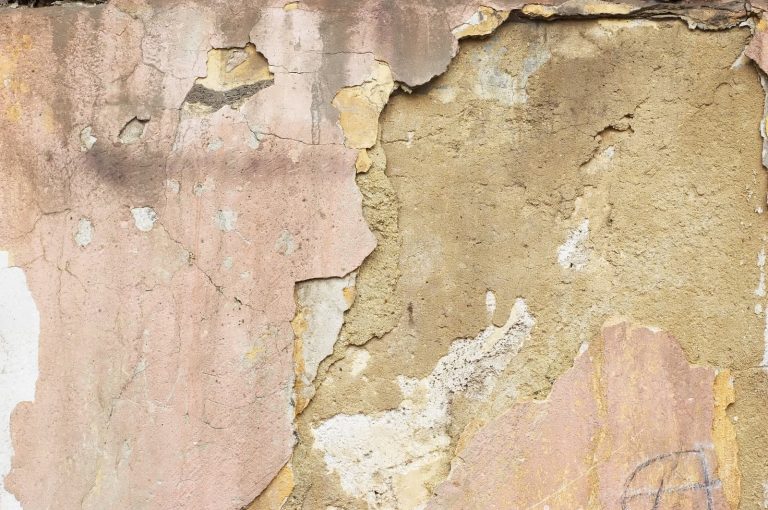Signs of Stucco Damage That Can Lead to Failure
Stucco siding is a great way to make a more energy efficient and beautiful home. However, this is only when the stucco system is installed properly by a trained and certified professional. If stucco is installed incorrectly or the siding is an older application, it is more prone to failure. Not only is damaged and failing stucco unsightly, but it can lead to moisture getting trapped underneath, causing further damage and rotting to your home. Fortunately, there are warning signs to detect failing stucco systems.
Stucco damage
Typically, homeowners notice stucco damage but rarely consider whether or not the system has failed. Stucco with a few small dings could be perfectly fine but heavier damage is a strong indicator of underlying issues. This type of damage includes long, thin cracks, heavy staining, bulging at various points of the wall finish as well as stucco that is falling off and missing. If you notice these signs, call in a trained professional for stucco repair or remediation.
Leaks
One of the biggest red flags of stucco damage is when you notice leaking in your house. If you’ve seen water stains on your walls or ceiling, there could be a leak from the exterior of your home. Check to see if the stains could have been caused by damaged plumbing or some other issue first. If it’s clear that the leaks are coming from the exterior of your home, your stucco could be the problem. Rainwater and moisture can get trapped behind the stucco siding and seep through the walls or ceiling. This creates a breeding ground for mold and mildew that could be detrimental to your health.
Caulking
Another way to identify stucco damage is through inspecting the interior trim on the doors and windows of your home. When stucco fails, it is more likely for moisture and air to enter from the exterior of the home. This will cause the caulking to shrink and dry or the adhesion may wear away. While this isn’t a definitive sign of stucco failure, it is definitely something to look out for while making an assessment.
Proper sealing
In any stucco or EFIS system, there are different materials that meet at junctions that need to be sealed. During the initial installation of these systems, an inexperienced stucco contractor may have improperly sealed the system or used the wrong sealant. Looking for information on how your stucco was installed can give you a better sense of whether or not it is failing or could fail in the future.
Rotting
Rotting is a common form of stucco damage that often leads to failing stucco systems. Inspect the fixtures on the stucco exterior and look for dark spots and staining around windows, doors, electrical outlets, meter boxes, pipes, and spotlights. You may be able to smell rotting wood if you get close to the stains.

Stucco Moss
It’s not unusual for the stucco to become discolored at the bottom as rainwater splashes dirt onto the home. It’s also not unusual for moss to grow in these wet, shady areas. While moss can be scrubbed away with bleach, it’s essential to address the moisture problem that creates such an inviting space for moss. In areas where moss grows on your stucco, consider removing the nearby vegetation in favor of ornamental rock to facilitate drying of the walls. Any steps that you can take to minimize the moisture at the walls and prevent water from soaking the area is beneficial.
Stucco crumbles
Crumbling stucco could be due to age, stress, pest infestations, settling, water damage, vibrations, impact accidents, and even improper stucco installation. As more stucco crumbles away, the problem worsens because the stucco integrity is breached and additional water can seep inside. It is time for a stucco evaluation to help identify the cause of the problems and provide remediation recommendations.

How to identify a stucco problem
Staining around the corners of windows, dark spots where a roof and wall meet and even visible cracks are indicators of possible damage.
These stains are signs of where water runs on and/or within the stucco. Where you see these, there is likely moisture behind the stucco, however, it is only through a professional inspection that a subsurface problem can be confirmed.
Many homes were built without proper attention to good water management details. Some were built before building codes addressed this issue well.
Stucco problems are not limited to the exterior of your wall. There may be some hidden damage that you can’t see.
Mold
Water trapped within a wall can lead to significant mold growth within the wall, leading to the possibility of health issues for the occupants.
Once mold begins to grow, the only way to address it is to get to it (by opening up the wall) and treating it. This is dangerous and should only be done by a trained professional.

Stucco Repair vs. Stucco Remediation
Whether or not your insurance company will cover your claim, the issues causing stucco failure need to be addressed. At this point in the journey, you’re left with two options: stucco repair or stucco remediation? While both options have their pros and cons, one offers a complete solution whereas the other offers merely a temporary fix.
Stucco repair
The process of repairing stucco involves finding damaged areas and replacing or reapplying more stucco. If your issues are minor or purely cosmetic, stucco repair may prove to be an effective solution. While repairing stucco is often much cheaper than remediation, the major issue with this option is that it fails to solve the underlying issues. As noted above, when the underlying issues aren’t addressed it can lead to a bevy of more significant and expensive problems.
Stucco Remediation
If stucco repair is akin to patching a tire, stucco remediation is like having your tires replaced, brakes checked, and your fluids topped off. Stucco remediation addresses the underlying issues before replacing the home’s stucco exterior. Typically, a home going through the stucco remediation process will opt for a better siding option, such as fiber cement or vinyl siding. These materials are better suited to deal with the harsh conditions faced in the Northeast. Although stucco remediation is more expensive, it’s the better long term choice.
Stucco Failure Questions Homeowners Should Ask
These are the questions a stucco inspector will seek to answer in order to tell if you have bad stucco. Homeowners who are worried about stucco home problems should ask themselves these questions, too.
Have there been any leaks in the stucco siding?
Thinking about all the years you’ve lived in your home, whether it’s been 2 years or 20. Has there ever been a leak? If so, was the issue plumbing-related? If not, chances are good that the leak was caused by a deficiency in your home’s exterior. Consider any leaks that have occurred in your stucco siding and start there.
Is the home’s caulking missing or aged?
Inspect the interior trim of your home’s windows and doors. Look for missing or aged caulking around the trim. There should be sealant around the entire perimeter of the window and door opening. If you see shrunken, dried caulking, or if the adhesion is no longer present, then that area has a higher probability for water and air intrusion. Remember, stucco failure begins when water is allowed into the wall cavity.
HINT: If you can feel a draft, that means water can enter as well!
Is the transition between stucco and other siding materials properly sealed?
If you have Stucco or EFIS on the exterior of your home, any dissimilar materials must be separated. Those junctions must be sealed with an approved sealant. Of all the homes with stucco failure that I’ve seen, I would say over 95% are lacking in this vital construction detail.
Is the stucco cracking or turning black?
Cracking and discoloration are perhaps the most common indicators of stucco home problems. Look at your home’s stucco siding and try to identify these common signs of damage:
- Heavy staining
- Thin cracks
- Long cracks
- Bulges in the stucco wall finish
- Missing stucco
Even if you can only find some of the issues listed above, these stucco failure warning signs are often just the tip of the iceberg.